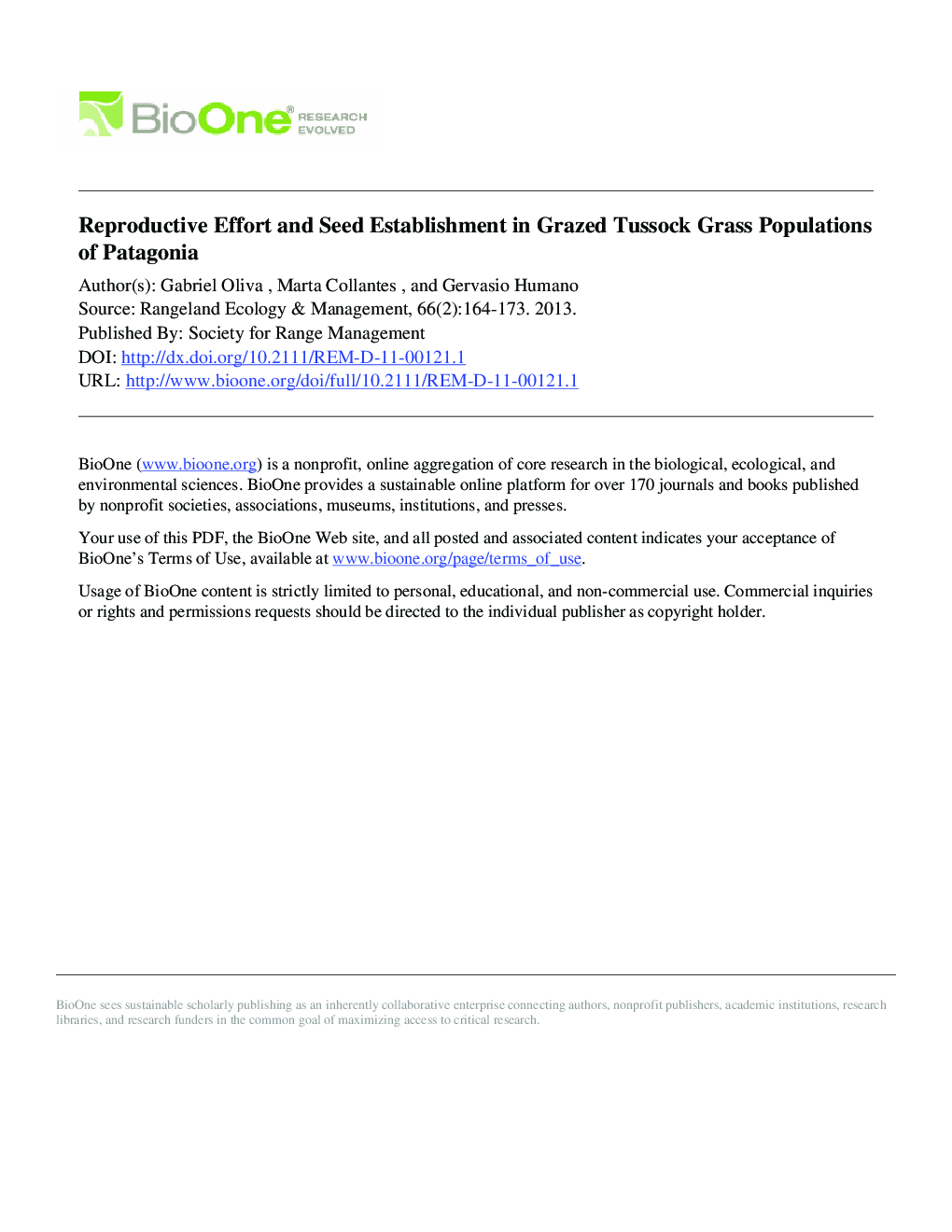| Article ID | Journal | Published Year | Pages | File Type |
|---|---|---|---|---|
| 4404440 | Rangeland Ecology & Management | 2013 | 11 Pages |
Abstract
The importance of sexual reproduction in tussock grasses that regenerate through vegetative growth is unclear. Festuca gracillima Hook. f. was studied as a model because it is a perennial tussock-forming grass that produces abundant seed but rarely regenerates through seedlings. The Study area was the Magellanic Steppe, Patagonia, Argentina (182 mm rainfall), managed with sheep-grazing regimes of 0.65 (high), 0.21 (low), and 0 (exclosure) ewe equivalentsâ·âhaâ1â·âyrâ1. Tussock size and spikelet production of 358 individuals were recorded over 5 yr. Yearly models of reproductive effort in relation to plant size were tested using a maximum likelihood procedure. Seed was collected and soil cores were tested for germination and viability. Survival and growth of cohorts of seedlings sown in nylon bags were recorded. Eighteen experimental plots were cleared, and seed establishment under protected and grazed conditions was registered. Reproductive effort varied with years and plant size, with a mean of 2.41%. Florets were produced at mean density of 544â±â217â·âmâ2. Predispersal losses reduced viable seed production to 187â±â48 seedsâ·âmâ2. Seed weighed 2-2.5 mg, with 65-95% germination. Postdispersal losses reduced the seed bank in spring to 33â±â1.3 seedsâ·âmâ2. Seedling survival curves were negatively exponential, with 95% mortality in the first year. Up to 5% of resources were used for sexual reproduction in favorable years and a recruitment of 1-3 new seedlingsâ·âmâ2â·âyrâ1 was expected. These new plants were not observed in undisturbed plots, but established naturally in cleared plots and reached a density of 1 plantâ·âmâ2 after 10 yr, together with 44 plantsâ·âmâ2 of other species. Competition might block the final establishment in these grasslands. Grazing does not appear to interfere in any stage of seed reproduction. Seed production may not maintain population numbers but could enhance genetic variation in these clonal plant populations and enable dispersal and recolonization of disturbed areas.
Related Topics
Life Sciences
Agricultural and Biological Sciences
Agricultural and Biological Sciences (General)
Authors
Gabriel Oliva, Marta Collantes, Gervasio Humano,
